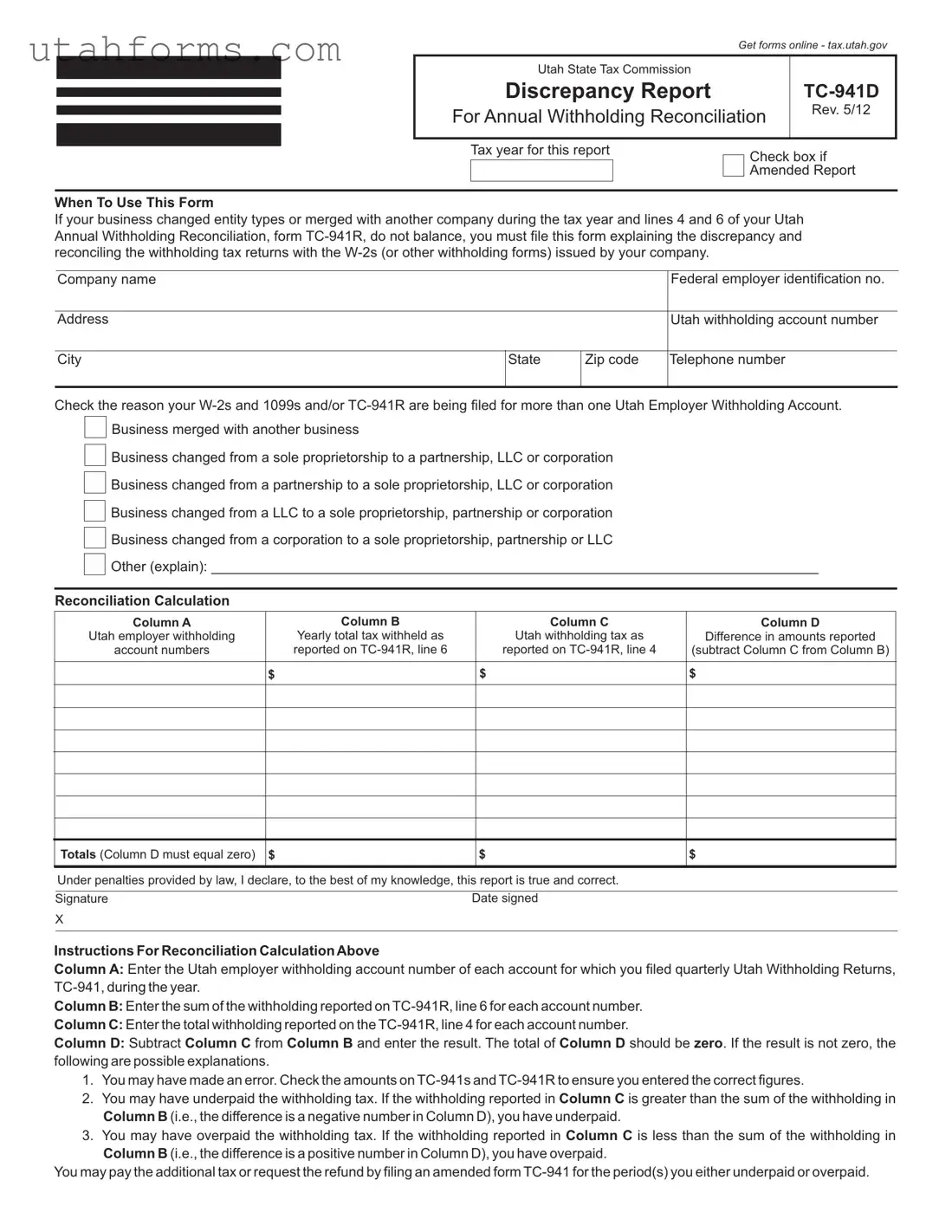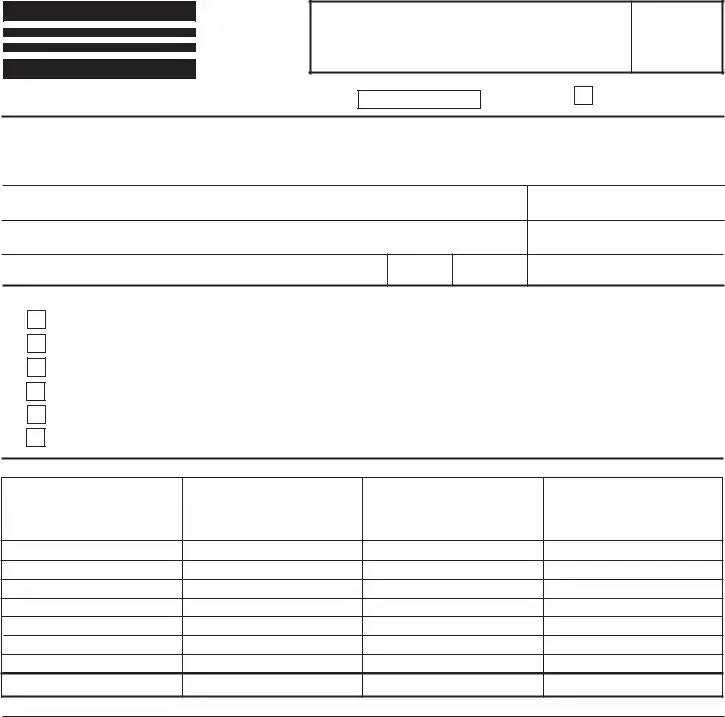The Utah Annual Withholding Reconciliation, form TC-941R, shares similarities with the TC-941D in that it serves as a crucial component for businesses to report total tax withheld from employees' earnings. Both forms are integral to ensuring accurate tax reporting and reconciling discrepancies in withheld tax amounts. The TC-941R focuses on summarizing the total tax withheld throughout the year, which is necessary when discrepancies are identified and need to be explained through the TC-941D.
The Utah Quarterly Withholding Return, form TC-941, has a direct relation to the TC-941D as it provides the detailed quarterly tax withheld information. Businesses need to compile and reconcile these quarterly reports against the annual summary reported on form TC-941R and, by extension, the TC-941D if discrepancies arise. This form is a vital part of tracking and reporting withheld taxes to ensure they match the annual figures reported.
The W-2 form, or Wage and Tax Statement, plays a significant role alongside the TC-941D. It is the form employers give to their employees and the IRS at year's end, which details the employee's annual wages and the amount of taxes withheld. Discrepancies in the TC-941D often stem from variations in what's reported on the W-2s compared to what's been submitted through the business's withholding tax forms.
The 1099 form series, particularly the 1099-MISC for miscellaneous income, is relevant to the TC-941D as it involves reporting payments made to non-employees. Businesses that have discrepancies in their withholding tax reporting as outlined in TC-941D may need to review the 1099 forms they issued to ensure correct withholding and reporting of taxes for contractors or other non-employees.
Form TC-20, the Utah Corporation Franchise or Income Tax Return, is similar in concept to the TC-941D as it involves reconciling tax liabilities with payments made throughout the fiscal year for corporations. While TC-941D focuses specifically on reconciling discrepancies in withholding taxes, TC-20 addresses the broader gamut of corporate tax responsibilities.
The Amended Employer's Quarterly Federal Tax Return, Form 941-X, serves a similar purpose at the federal level to what the TC-941D does for Utah state taxes. When businesses identify mistakes in previously filed Form 941s, including those related to withholding taxes, they use Form 941-X to make corrections. The parallel process at the state level is handled through the TC-941D, where discrepancies between reported withholding taxes and actual figures are reconciled.
Form 940, the Federal Unemployment Tax Act (FUTA) Tax Return, while primarily focusing on unemployment tax, is part of the suite of payroll tax forms that includes forms W-2, 1099, and others relevant to the TC-941D. Though it deals with a different type of tax, the process of reconciling and ensuring accurate reporting is analogous to the scrutiny required for the TC-941D.
The Schedule K-1 (Form 1065), used by partnerships to report the share of income, deductions, and credits to partners, indirectly relates to the TC-941D. Discrepancies that might arise in withholding reporting on the TC-941D could stem from incorrect or incomplete reporting on Schedule K-1 forms, especially in businesses transitioning from partnerships as outlined in the TC-941D instructions.
The Change of Address or Responsible Party — Business, Form 8822-B, is connected to the TC-941D in the context of ensuring that all tax documents and correspondence are sent to the correct address following a change in business structure or merger. Accurate reporting and reconciliation of forms like the TC-941D rely on the IRS and state tax commission having current business information.
An Offer in Compromise, Form 656, involves proposing to the IRS to settle tax debts for less than the full amount owed. While not directly related to the process of reconciling withholding tax discrepancies as with TC-941D, it represents a resolution method for businesses facing significant tax discrepancies or underpayment identified through forms like TC-941D.

